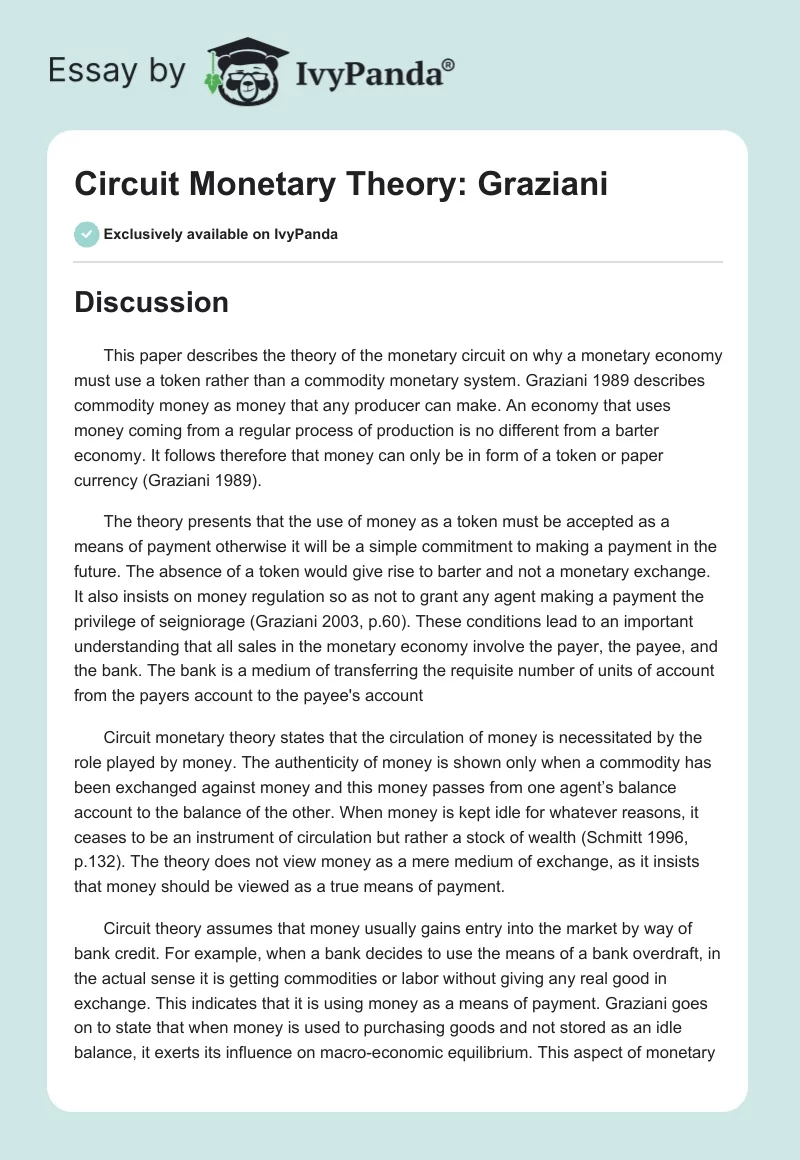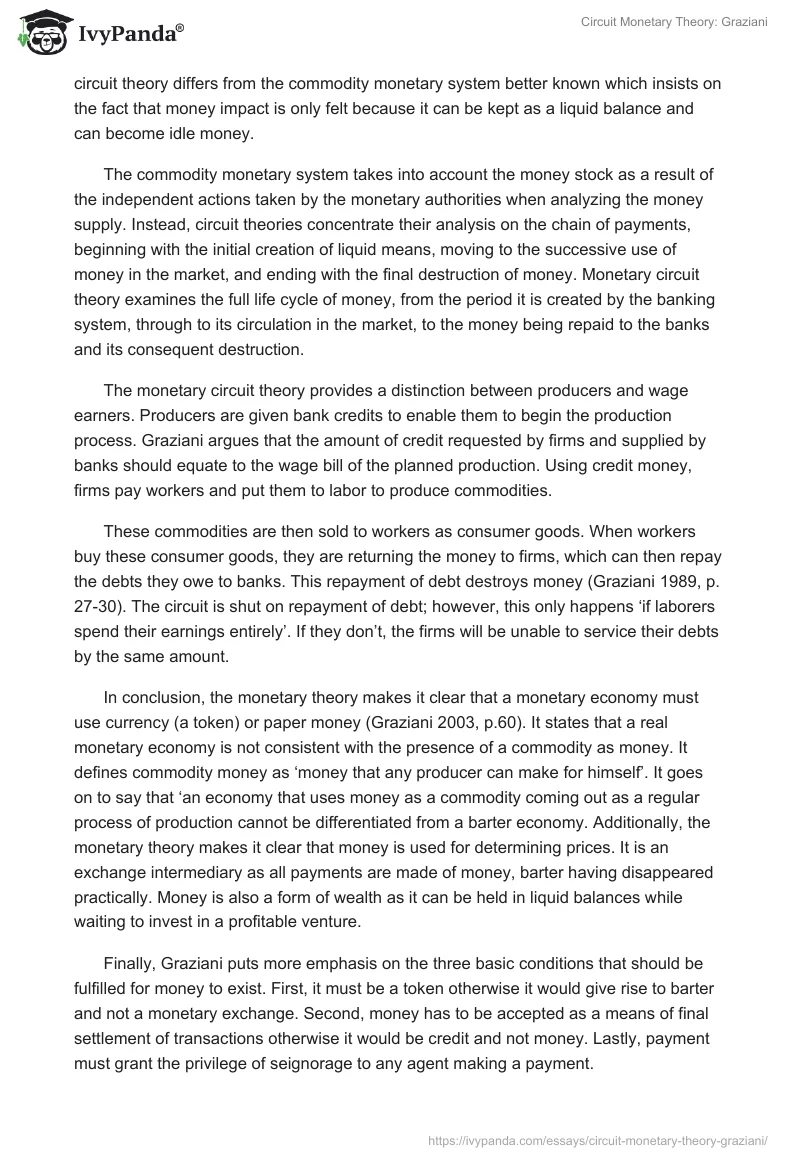Discussion
This paper describes the theory of the monetary circuit on why a monetary economy must use a token rather than a commodity monetary system. Graziani 1989 describes commodity money as money that any producer can make. An economy that uses money coming from a regular process of production is no different from a barter economy. It follows therefore that money can only be in form of a token or paper currency (Graziani 1989).
The theory presents that the use of money as a token must be accepted as a means of payment otherwise it will be a simple commitment to making a payment in the future. The absence of a token would give rise to barter and not a monetary exchange. It also insists on money regulation so as not to grant any agent making a payment the privilege of seigniorage (Graziani 2003, p.60). These conditions lead to an important understanding that all sales in the monetary economy involve the payer, the payee, and the bank. The bank is a medium of transferring the requisite number of units of account from the payers account to the payee’s account
Circuit monetary theory states that the circulation of money is necessitated by the role played by money. The authenticity of money is shown only when a commodity has been exchanged against money and this money passes from one agent’s balance account to the balance of the other. When money is kept idle for whatever reasons, it ceases to be an instrument of circulation but rather a stock of wealth (Schmitt 1996, p.132). The theory does not view money as a mere medium of exchange, as it insists that money should be viewed as a true means of payment.
Circuit theory assumes that money usually gains entry into the market by way of bank credit. For example, when a bank decides to use the means of a bank overdraft, in the actual sense it is getting commodities or labor without giving any real good in exchange. This indicates that it is using money as a means of payment. Graziani goes on to state that when money is used to purchasing goods and not stored as an idle balance, it exerts its influence on macro-economic equilibrium. This aspect of monetary circuit theory differs from the commodity monetary system better known which insists on the fact that money impact is only felt because it can be kept as a liquid balance and can become idle money.
The commodity monetary system takes into account the money stock as a result of the independent actions taken by the monetary authorities when analyzing the money supply. Instead, circuit theories concentrate their analysis on the chain of payments, beginning with the initial creation of liquid means, moving to the successive use of money in the market, and ending with the final destruction of money. Monetary circuit theory examines the full life cycle of money, from the period it is created by the banking system, through to its circulation in the market, to the money being repaid to the banks and its consequent destruction.
The monetary circuit theory provides a distinction between producers and wage earners. Producers are given bank credits to enable them to begin the production process. Graziani argues that the amount of credit requested by firms and supplied by banks should equate to the wage bill of the planned production. Using credit money, firms pay workers and put them to labor to produce commodities.
These commodities are then sold to workers as consumer goods. When workers buy these consumer goods, they are returning the money to firms, which can then repay the debts they owe to banks. This repayment of debt destroys money (Graziani 1989, p. 27-30). The circuit is shut on repayment of debt; however, this only happens ‘if laborers spend their earnings entirely’. If they don’t, the firms will be unable to service their debts by the same amount.
In conclusion, the monetary theory makes it clear that a monetary economy must use currency (a token) or paper money (Graziani 2003, p.60). It states that a real monetary economy is not consistent with the presence of a commodity as money. It defines commodity money as ‘money that any producer can make for himself’. It goes on to say that ‘an economy that uses money as a commodity coming out as a regular process of production cannot be differentiated from a barter economy. Additionally, the monetary theory makes it clear that money is used for determining prices. It is an exchange intermediary as all payments are made of money, barter having disappeared practically. Money is also a form of wealth as it can be held in liquid balances while waiting to invest in a profitable venture.
Finally, Graziani puts more emphasis on the three basic conditions that should be fulfilled for money to exist. First, it must be a token otherwise it would give rise to barter and not a monetary exchange. Second, money has to be accepted as a means of final settlement of transactions otherwise it would be credit and not money. Lastly, payment must grant the privilege of seignorage to any agent making a payment.
References
Graziani, A 2003, Monetary Theory of Production, Cambridge University Press, Cambridge.
Graziani, 1989, The Theory of Monetary Circuit, Thames Papers in Political Economy, London.
Schmitt, B 1996, Introduction to the International Edition of Money Writing, Encyclopedia, Rome.


